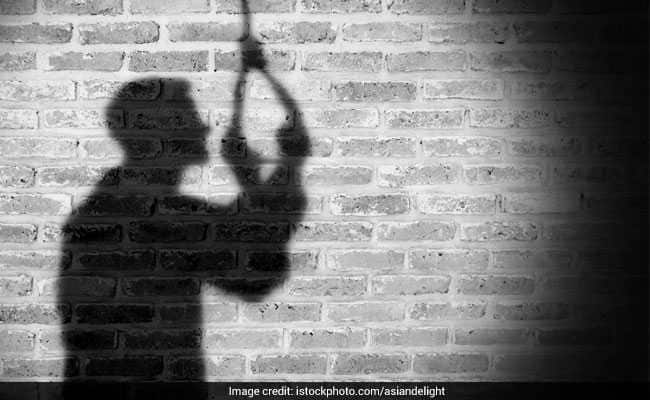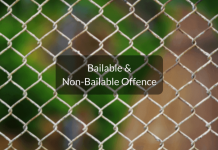This article is written by Ronika Tater, from the University of Petroleum and Energy Studies, School of Law. In this article, she discusses the difference between suicide, abetment of suicide and murder. Also, highlighting the seriousness of abetment of suicide with recent case laws and provision.
Table of Contents
Introduction
In the present scenario, the media plays an essential role in influencing the minds of the public. The recent controversy about the death of actor Sushant Singh Rajput and the arrest of Arnab Goswami by the Police in abetment of suicide case, for Anvay Naik in May 2018, has raised questions on the legal provisions of abetment of suicide under the criminal statute.
Abetment of suicide as per the Indian Penal Code
The Indian Penal Code, 1860 (IPC) states that the abetment of suicide is a punishable offence. Section 306 of the IPC punishes with either a jail term of up to ten years or a fine or both:
“If any person commits suicide, whoever gets the commission of such suicide shall be punished with imprisonment of either imprisonment for a term which may extend to ten years, and shall also be liable to fine.”
The IPC also prescribes a separate chapter on abetment and states who is an abettor under Section 108 of the IPC. Abetment is defined as inclusive of instigating, engaging in a conspiracy or assisting in committing the offence.
The standard of the abatement of suicide was mentioned in the case of M.Mohan v. State Judgement 2011 where the Supreme court has laid down the test to determine abetment of suicide to convict a person, there has to be a clear mens rea, which is an integral part of committing the offence also known as intention and the other requirement is an active act or direct act which led the deceased or victim to commit suicide left with no option and it must have pushed the deceased into such a position to commit suicide as the only option. Abetment of suicide is a serious offence tried in Session court and is cognizable, non-bailable and non-compoundable.
The following offences have been described below:
- Cognizable offence- It is a type of offence in which the police officer can arrest without a warrant from the court.
- Non-bailable offence- In this type of offence, bail is granted to the accused at the discretion of the court and not as a matter of right.
- Non-compoundable offence- It is a type of offence in which the case cannot be withdrawn by the complainant even if the complainant and the accused have made an understanding. In such a case, the court cannot withdraw the case and every such complaint is accordingly followed by a trial where evidence is held against the accused.
Court perspective, if the accused has abetted the suicide or not
When there are no provisions provided in the statute, the court interprets the provision to solve the void. There are two ingredients for the crime of abetment of suicide as mentioned below:
- Suicidal death
- The intention of the accused to abet or instigate such suicide
To determine whether a death is a suicide is a determination of a fact, which states that the proof has to be verified to pronounce that death is a suicide. Hence, suicide means taking one’s own life or self-destruction, but we do not presume suicide.
It is assumed to be suicide when the deceased individual is known to another person that the deceased has the probability to cause self-harm and yet he or she intentionally pushes. Once such a determination is known, then the intention of the person accused of abetment is analyzed.
The exception in such a scenario of abetment of suicide is of a woman married for seven years of the marriage, however, the 1983 amendment in the Code of Criminal Procedure, states that the law has changed to presume that the husband is guilty if his wife commits suicide within the said period i.e, seven years of the marriage. The aim behind the amendment was to curb the rising dowry death in the case of a woman that was originally categorized as suicide in the law.
Case law concerning the intention to abetment of suicide
The court has successfully determined the intention which leads to a drive a person to suicide through multiple ruling. In the case of, Sanjay Singh v. State of Madhya Pradesh, the court held that a comment or a statement made in haste, anger would not amount to the abetment of suicide. To drive the deceased to suicide, instigation and involvement of the accused must be directly connected and any remote act of the accused would not charge the accused with the offence of abetment of suicide. Suicide must be a direct consequence of the instigation by the accused and not a mere coincidence or remote act to the committing of suicide.
To understand the concept better, some of the examples are below mentioned:
- Assumedly, Person A says “you deserve to die and go” to Person B in anger and afterwards, B hangs herself to death, in such a case A cannot be charged with abetment to suicide. The intention of A was not to instigate B to commit suicide, it was merely words uttered in anger. In this case, the court will determine the Person’s behaviour and relationship to determine the intention.
- Hypothetically, Person X influences Person Y to kill himself or herself by consuming rat poison tablets and under the influences the Person Y consumes it, then in such circumstances Person X would be liable as an abettor under Section 306 of the IPC.
Essential ingredients of abetment of suicide
In the case of M. Arjunan v. State (represented by its Inspector of Police), 2019, where a two-judge bench explained the essential ingredients of the offence under Section 306 of the IPC as below-mentioned:
- The abetment
- The intention of the accused to aid or instigate or abet the deceased to commit the suicide
- Act of the accused lead by insulting, using abusive language to the deceased
- Evidence to suggest that the accused intended an act to instigate the deceased to commit such a serious offence
However, if the above-mentioned ingredients of instigation or abetment to commit suicide are not satisfied, the accused cannot be held liable under Section 306 of the IPC.
Grounds for abetment of suicide
In the case of, Praveen Pradhan v. State of Uttaranchal, 2012, it was held that instigation to commit suicide has to proved by gathering evidence from the circumstances of a particular case and there should be direct nexus of the instigation and the act. A successful prosecution needs to process, there must be intention and involvement of the accused to instigate the commission of suicide.
In the case of AR Madhav Rao v. the State of Haryana, 2018, where it was stated that merely naming a person in the suicide note is not presumed that he is an offender under Section 306 IPC. The court emphasized that the suicide note and other appending circumstances need to be analyzed whether the act leads to any incriminating information in instigation, provocation, forcing the victim to commit suicide.
In the case of Gurcharan Singh v. the State of Punjab, the Supreme Court acquitted the accused, although the deceased had a close relationship and mentioned the name in their suicide note. However, the court examined the note and due to lack of evidence on record that the acts of the accused were of the nature of cruelty, oppression, harassment or instigation to provoke the deceased to take this step and left with no other alternative.
A similar case, Reena v. State of NCT Delhi, 2020, where the Delhi High Court, after examining the contents of a suicide note and looking at the material on record, held that there was no instigation, incitement, goading or provocation from the accused that compelled the deceases to resort to self-extinction, hence, the charges against the accused were dropped.
Arnab Manoranjan Goswami v. The State of Maharashtra and others, 2020
In the case of, Arnab Manoranjan Goswami v. The State of Maharashtra, 2020, a question was raised whether the accused was charged for abetment of suicide of the deceased as his name was mentioned in the suicide note or not. The deceased had not received the payment for the work completed by him and as a result, under mental pressure, he committed suicide. However, the court held that there was no direct nexus to the consequences and investigation should be completed.
Further, the accused referred to the case of S.S Chhenna v. Vijay Kumar Mahajan, 2010, where the two-judge bench observed the definition of abetment and held that it involves a mental process of instigating or intentionally aiding a person to do a thing. Without the active role of the accused in instigating the crime, the conviction cannot be sustained and to convict a person under Section 306 IPC it is essential to have a clear mens rea to commit the offence.
In the present case, the Supreme Court granted bail to the accused because the High Court failed to perform its function to protect the rights of the citizen and in granting bail to the accused. In the case of P. Chidambaram v. Central Bureau of Investigation, while considering an application for the grant of bail under Article 226 of the Constitution of India, the High Court must exercise its power and jurisdiction and follow these principles cautious as below-mentioned:
- The nature of the offence, nature of the accusation and the severity of the punishment in the case of conviction.
- Whether there exists a reasonable fear of the accused damaging the evidence or threatening the witnesses.
- Possibility of the accused to flee from justice.
- Whether, prima facie, the ingredients of the offence are based on the allegations as mentioned in the First Information Report (FIR).
- Whether public interest or the state or other similar considerations are involved..
In the present case, the accused who was an abiding citizen had no intention to perform any act to disrupt the working of the criminal court and its function. Further, the Supreme Court held that the accused are directed to cooperate in the investigation of the deceased’s death and shall make no attempt to disturb the ongoing investigation or with the witnesses.
Difference between abetment of suicide and murder
The term “Murder” has derived from the Germanic word “morth” which means secret killing. It means when one person is killed by another or a group of people with a predetermined notion or intention to end his life of the former. Section 299 and section 300 of IPC deals with the provision of murder. The main ingredients of murder are as follows:
- Causing death with an intention.
- Doing an act with an intention that could cause such bodily injury that is most likely to cause death.
- The act must be done knowing that it is likely to cause the death of another person.
However, the term “suicide” comes from the Latin word “suicidium” which means “the act of taking ones’ own life”. The intention plays an important role in criminal law, but the intention of the accused to drive a person to commit suicide, in the case of abetment of suicide, is different from that of the murder. Although, in both cases, causing the death is the common factor but in the case of the murder the final act of causing the death is committed by the accused with the intention and it is not the case in abetment of suicide.
Conclusion
To proof any offence under the IPC, it essential to preserve human liberty and the courts should take cautious action while analyzing the matter and the circumstances especially, in the case of abetment of suicide. In criminal cases, it is difficult to prove the intention of both, the accused and the deceased.
References
- The Indian Penal Code, 1860
- Constitution of India
- Arnab Manoranjan Goswami v. The State of Maharashtra and others Criminal Appeal No. 742 of 2020
LawSikho has created a telegram group for exchanging legal knowledge, referrals and various opportunities. You can click on this link and join:
means an instrumentality for accomplishing some end More (Definitions, Synonyms, Translation)
 Serato DJ Crack 2025Serato DJ PRO Crack
Serato DJ Crack 2025Serato DJ PRO Crack











 Allow notifications
Allow notifications



